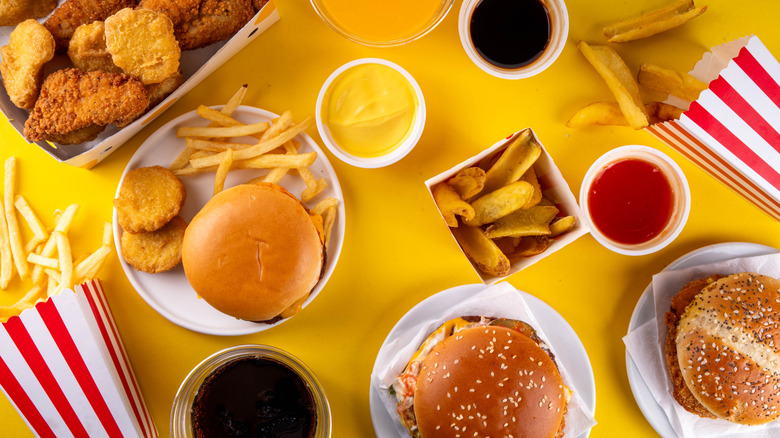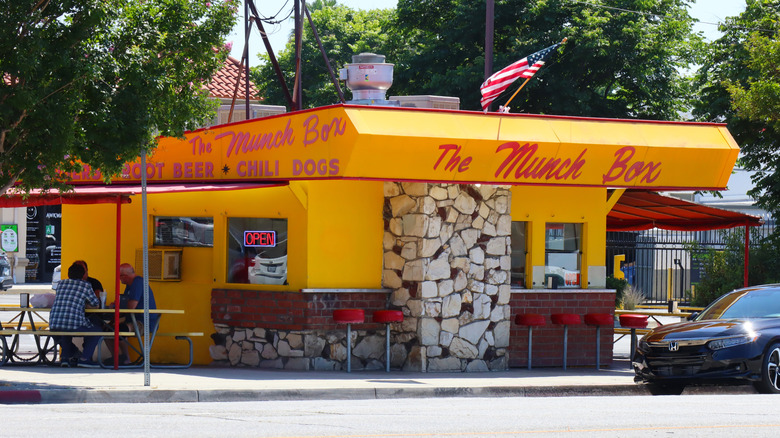The 2 California Fast Food Joints That Became Historic Landmarks
California has delivered some prominent contributions to American food culture. The state gave rise to the first McDonald's, which opened before iconic chains like Burger King. And in the 19th century, American-Chinese dining emerged in the Bay Area, creating still popular dishes like chop suey. Well, in ode to the state's rich culinary heritage, the city of Los Angeles has also inducted locations of two fast food eateries as historic landmarks.
They're the Munch Box and Wienerschnitzel. Both restaurants look similarly unassuming, constructed as small, predominantly takeout-focused eateries with yellow and red stylings. And even their fare overlaps, too. The Munch Box focuses on burgers, while also serving hot dogs and belly-warming chili dogs, all accompanied with fries and tasty root beer floats. Meanwhile, Wienerschnitzel is all about hot dogs, although the chain sells a varied menu of corn dogs, burgers, and sandwiches, too.
Such casual businesses weren't the first of their kind: Hollywood-based Pink's Hot Dogs predated both for over a decade. However, their historic landmark status instead comes by way of the unique architecture, tailored specifically for on-the-go dining. As examples of some of the earliest roadside dining spots in Los Angeles, they've also been imprinted into American food history.
Fast food eateries Der Wienerschnitzel and The Munch Box are Los Angeles landmarks
The induction of these locations is not a recent development: Der Wienerschnitzel made the list in 2013, while the Munch Box a whole decade earlier in 2003. And especially in the case of the latter restaurant, such landmark status is fortunate for its preservation. The Munch Box has operated from 1956 out of Chatsworth, California, serving well-priced old-school foods. As developers started encroaching in the early 2000s, it appeared demolition would be imminent — which is when local politicians stepped in to sustain the business. The Munch Box continues to operate as a single, family-owned location with a loyal following.
As for Wienerschnitzel, the landmark offers protection for its first location, in operation since 1961. Unlike the Munch Box, the move wasn't to ensure economic success — with over 300 operating locations in 13 states, and a recent expansion to the Walmart food court, the chain's doing well. Instead, it's to commemorate the success of the business, which started as a roadside stop on the Pacific Coast Highway in Wilmington, California. So, although recognized for different reasons, both landmarks offer an insightful glimpse into a different era of dining. The bright colors and unique architecture caught the eye of passing motorists, who'd return for tasty food at affordable prices.


